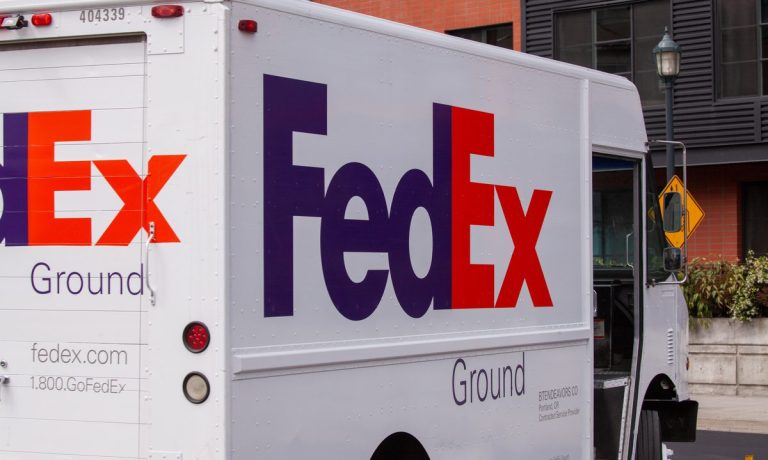Today in Retail: FedEx Sees Growth in eCommerce; CarMax Ups Customer Capabilities

Today in retail, U.S. senators are trying again to get support for Payment Choice Act, while H&M closes its Shanghai, China, flagship location amid supply chain issues and backlash over lack of Xinjiang cotton use. Plus, Amazon and Walmart lean on high-tech solution as recession likelihood increases.
Senators Reintroduce Bill to Preserve Freedom of Payment Choice
U.S. Sens. Bob Menendez (D-N.J.) and Kevin Cramer (R-N.D.) have reintroduced the Payment Choice Act, a bill they first pushed forward about a year ago, in the hopes of giving customers the freedom to choose how they pay for goods and services.
The bipartisan Payment Choice Act “would prohibit retail businesses from refusing to accept cash as a form of payment and charging a higher price for using cash than for other forms of payment,” according to a press release.
About 5.4% of U.S. households are unbanked, meaning they don’t have a checking or savings account. In comparison, 16% are underbanked, meaning they rely on money orders and other financial services to make transactions. Cash payments represent 19% of all payments in the U.S. economy. If the bill is adopted, violators could be fined up to $2,500 for the first offense and $5,000 for the second.
What Recession? FedEx Sees eCommerce Leading Growth
After closing out a record fourth quarter and fiscal full year, FedEx turned its sights on the year to come, telling investors it does not foresee a recession but is expecting low single-digit volume growth in package deliveries led by continued outperformance of its eCommerce customers.
The comments from the 50-year-old Memphis-based delivery and logistics firm were well received on Wall Street and in the retail industry.
While saying the company was prepared to lower its forecast and guidance and had built-in “the necessary flex” to do so, newly appointed CEO Raj Subramaniam — who took over for FedEx founder Fred Smith June 1 — said that was not his expectation, even though the current operating environment remains challenging.
Lockdowns, Consumer Backlash Force H&M to Close Shanghai Flagship
Fashion retailer H&M has closed its Shanghai, China store, the latest move in that nation after consumer demand is flagging as the country has just begun to lift restrictions related to the COVID-19 pandemic and shoppers are fighting back against companies that won’t use Xinjiang cotton.
It’s unclear when the three-story H&M flagship location closed, but it was open earlier this month and was boarded up Friday (June 24) with no H&M signage evident, according to a Reuters report. The store opened in 2007, when H&M came to China and expanded to 500 stores by early last year. The company lists 376 China locations on its website, including the now-shuttered flagship store.
H&M wouldn’t comment on the situation, saying it’s in a blackout period ahead of its first-half earnings report scheduled for Wednesday (June 29).
CarMax Empowers Customers with Self-Progression Capabilities
At a time when the auto retail market has been getting hammered by rising interest rates and fuel costs, used auto retailer CarMax has put more of the power in the hands of its growing customer base in the first quarter of fiscal 2023, the three months ending May 31.
CarMax has enabled online self-progression capabilities for all retail customers, a move that helped to bring the Q1 net revenues to $9.3 billion, a 21% increase from the same period one year earlier. Customers are showing an increased interest in choosing their car’s price, attributes and more.
Wholesale unit sales were up 2.7% to 186,307 vehicles, while retail used unit sales were down 11% to 240,950 vehicles. Comparable store used unit sales dropped 12.7% year-over-year in Q1. CarMax sold 427,257 cars through its retail and wholesale channels, down 5.5% from Q1 of fiscal 2022, and bought 362,280 vehicles from consumers and dealers, up 6.2% from the same time one year earlier.
Amazon vs Walmart Weekly: Amid Economic Turbulence, Retailers Turn to Tech
Amazon and Walmart both rolled out high-tech solutions this week aimed at finding new efficiencies and savings in the face of sharply higher costs for fuel, freight and wages.
On the one hand, the scale and scope of customer-facing fixes — such as price increases — requires ongoing daily analysis and measured adjustment to reflect myriad market forces that are constantly changing.
On the other hand, however, the inward-facing solutions that these two giants are deploying to cut internal costs have a much longer ramp-up time but will deliver financial impacts and time-saving tasks for years to come — presumably long after the current economic storm has died down and moved out to sea.